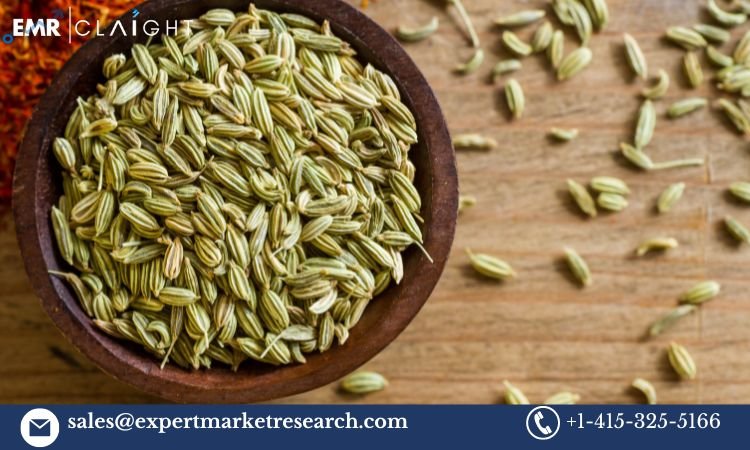The global commercial seeds market share is poised for significant growth, with an estimated CAGR of 7.50% from 2024 to 2032. As agricultural innovation advances, the commercial seeds market plays a pivotal role in enhancing crop productivity, food security, and sustainability. This article provides a comprehensive overview of the market, including its dynamics, key drivers, challenges, segmentation, and more.
Market Outlook
With a growing population and increasing demand for food, the commercial seeds market has become a cornerstone of modern agriculture. Commercial seeds are engineered to be high-yielding and resistant to diseases, providing farmers with reliable options for improving agricultural productivity. As a result, the commercial seeds industry is expected to thrive, reaching new heights between 2024 and 2032.
Market Overview
The commercial seeds market encompasses a wide variety of seed types, from traditional crops like corn and wheat to more specialized and genetically modified (GM) varieties. Key industry players like Bayer CropScience, Syngenta AG, Sakata Seed Corporation, KWS SAAT SE & Co. KGaA, Corteva Inc., and DLF Seeds A/S have invested heavily in research and development to deliver new seed varieties that address global agricultural challenges. As of 2023, the market is witnessing increased adoption of hybrid seeds and a growing preference for crops that offer improved pest and disease resistance.
Market Size and Dynamics
With a projected CAGR of 7.50%, the commercial seeds market is expected to expand considerably. This growth is primarily fueled by the following factors:
- Population Growth and Food Demand: The world’s population is estimated to reach 9 billion by 2050, leading to increased food requirements. Commercial seeds are critical for improving yields and meeting this demand.
- Advancements in Agricultural Technology: With innovations in biotechnology, seed companies can now develop genetically modified (GM) crops that provide greater resistance to pests, diseases, and environmental stress.
- Increased Adoption of Hybrid Seeds: Hybrid seeds have become a popular choice due to their higher yield and uniformity compared to traditional seeds. This shift is further driving the demand for commercial seeds globally.
Key Market Drivers
- Demand for Sustainable Agriculture: Consumers and regulatory bodies are increasingly demanding sustainable farming practices. Commercial seeds that are pest-resistant and require fewer chemical inputs are supporting the movement toward sustainable agriculture.
- Government Support and Subsidies: Many governments are supporting commercial seed adoption through subsidies and research funding. These initiatives encourage farmers to adopt new seed varieties that improve crop yields and contribute to national food security.
- Climate Change Adaptation: Climate change poses significant challenges to traditional agriculture. Commercial seeds that are designed to withstand harsh weather conditions, droughts, and temperature fluctuations are gaining popularity as a means of mitigating these risks.
Key Market Challenges
Despite the promising growth prospects, the commercial seeds market faces certain challenges:
- Regulatory Hurdles for GM Crops: Many countries have stringent regulations regarding genetically modified crops, which can limit market growth in regions where GM seed acceptance is low.
- Environmental Concerns: The use of genetically modified seeds raises concerns about biodiversity and the potential for cross-pollination with non-GM crops.
- High Costs: Commercial seeds, especially hybrid and GM varieties, are more expensive than traditional seeds. This can deter small-scale farmers in developing regions from adopting them, potentially limiting market growth.
Market Segmentation
The commercial seeds market is segmented based on type, crop, and region.
- By Type:
- Conventional Seeds
- Genetically Modified (GM) Seeds
- By Crop:
- Cereals & Grains: Includes wheat, rice, corn, and others, accounting for the largest share due to their essential role in global diets.
- Oilseeds: Primarily soybeans and canola, in demand due to rising edible oil consumption.
- Fruits & Vegetables: Seed demand in this segment is increasing as consumers shift toward healthier eating habits.
Component Insights
- Hybrid Seeds: Known for their high yield potential, hybrid seeds dominate the commercial seed market. Their adoption has been particularly strong in developing countries where farmers prioritize productivity.
- GM Seeds: These seeds have gained traction in regions like North America and South America, where they offer resistance to pests and environmental stressors. However, regulatory challenges remain a barrier to widespread adoption in Europe.
End-user Insights
The commercial seeds market caters to a variety of end-users:
- Farmers and Growers: As the primary consumers, they benefit directly from the enhanced productivity and resistance traits offered by commercial seeds.
- Agribusinesses: Large agribusinesses use commercial seeds to support large-scale crop production, maximizing efficiency and yield.
Regional Insights
- North America: The region leads the global market due to high adoption rates of GM seeds, extensive farmlands, and advanced agricultural practices.
- Europe: Europe has seen moderate growth in the commercial seeds market, primarily due to strict GM crop regulations. However, organic and non-GM seeds are gaining traction.
- Asia-Pacific: The Asia-Pacific region is expected to experience rapid growth due to population expansion, rising food demand, and increasing government support for improved seed varieties.
Key Market Players and Recent Developments
Leading players such as Bayer CropScience, Syngenta AG, Sakata Seed Corporation, KWS SAAT SE & Co. KGaA, Corteva Inc., and DLF Seeds A/S are heavily investing in research and development to create seeds that meet the evolving needs of farmers worldwide. Recent developments include new hybrid seed varieties, collaborations for sustainable agriculture initiatives, and advancements in genetic research for crop improvement.
Market Trends and Industry News
The commercial seeds market is witnessing trends such as the rise in demand for organic seeds, a shift towards sustainable and regenerative farming practices, and increased digitalization in agriculture. These trends are expected to shape the market’s growth trajectory in the forecast period.
FAQs
1. What are commercial seeds?
Commercial seeds are specifically developed and produced for sale and use in large-scale agricultural operations. They often include hybrid and genetically modified varieties that provide benefits like improved yields and disease resistance.
2. How is the market expected to grow between 2024 and 2032?
The global commercial seeds market is projected to grow at a CAGR of 7.50%, driven by advancements in agricultural technology and rising food demand.
3. Which region leads the commercial seeds market?
North America holds the largest market share due to high adoption rates of GM crops and advanced farming practices.
4. What role do government policies play in this market?
Government policies and subsidies can significantly impact the adoption of commercial seeds by providing financial incentives and supporting sustainable agriculture.
5. Are GM seeds widely accepted globally?
The acceptance of GM seeds varies by region, with high adoption in North and South America but regulatory challenges in Europe.
6. What are the main benefits of hybrid seeds?
Hybrid seeds offer higher yield potential, uniformity, and disease resistance, making them popular among farmers.



